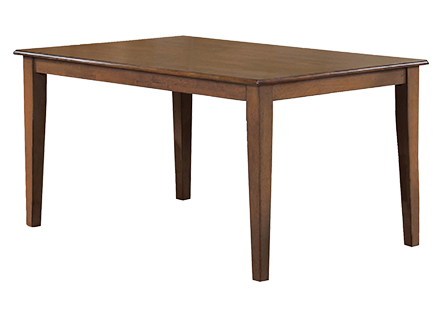How To Arrange Furniture in a Small Living Room: 4 Simple Steps
How To Arrange Furniture in a Small Living Room: 4 Simple Steps
It's time to start reframing perceptions around the "small space" living room.
But that's not all I'm doing—this season offers an opportunity to add some lively springtime flair to interior spaces. I've been looking to give my nest a design refresh, and I encourage you to do the same.
It can be easy to focus on the shortcomings of a conversation area that's a bit tight, but small spaces can make a big impact. When you're learning how to arrange furniture in a small living room, it helps to hone in on the cozy aspects of the space. Find ways to play up the warm, familiar parts that made you fall in love with your home in the first place — and then consider ways to make the most of every square inch so that it functions just as nicely as it feels.
Here are four considerations that can help you arrange a small living room to maximize its potential and create a lively, inviting space.
When you're designing a small living room, map out the flow from one end of the room to the other. Where are your doors and cased openings? How can you maintain a clear path between and around furniture?
A sofa isn't as easy to meander around as a side chair is, so it's best to put that in place first (and along the biggest wall).
Next in your quest to arrange a small living room is secondary seating, such as side chairs, ottomans and the like. To create a functional, comfortable conversation area, place seating options where they won't be in the way but are still within talking distance from the couch.
If your space is on the extra tight side, consider using armless seating options so you can easily maneuver around them.

When it comes to furnishing a smaller space, your first instinct might be to choose a range of small pieces, but it can be beneficial to think bigger! Larger furniture can give the space a feeling of grandeur, while tiny furniture could end up drawing attention to the fact that the room is on the smaller side.
Of course, there's a limit to this concept, so make sure you measure carefully to ensure pieces will fit within the constraints of the space. As a general rule of thumb, try to choose just two or three key pieces so that you don't overwhelm the space (for example, one sofa and a single side chair). Also, consider opting for seating and tabletop pieces that have exposed legs, as they can give the illusion of more free space.

3. Pay Attention To the Ornamentation
Similar to the way large furniture works well in small spaces, larger furnishings can also help you arrange a small living room in a tasteful way. While you may be tempted to choose a small rug, try to resist the urge. Instead, lay down the largest area rug your room can handle.
An oversized floor covering can act as a visual foundation for the entire room, as it can extend to each of the furniture pieces. This can make the process of layering furniture on top more intuitive, as you won't have to worry about your sofa or side table legs not touching the rug at all (which is often considered a decor faux pas).
One of the biggest considerations to take into account when discussing how to arrange furniture in a small living room is the coffee table. Similar to a rug, a coffee table can help tie the room together — plus, it provides functionality.
If you have just enough room for a coffee table, consider a round one. This allows for easier movement throughout the space and can be pushed up a little closer to the sofa than a traditional rectangular table. Make sure to measure your space to help you choose the correct coffee table size.

If putting a piece of furniture in the middle of a tight space feels counterintuitive, or it doesn't work well for your space, don't feel tied down to the idea. Instead, you can incorporate side tables, which can be pushed up against the walls to allow for tabletop storage and display.
Arranging a small living room doesn't have to feel constricting! While you may feel compelled to focus all of your creative energy on making it work, try to look at all of the ways it already is working. Add in sophisticated, stained-wood furniture to match the existing wood trim in your home, or choose fabrics in natural earth tones that help accentuate your large windows and the view of the outdoors.
As long as you think strategically about the furniture you layer into the space and how you arrange it to accentuate flow throughout, visitors won't be looking at how small the room is — they'll simply see a welcoming space that feels like home.













